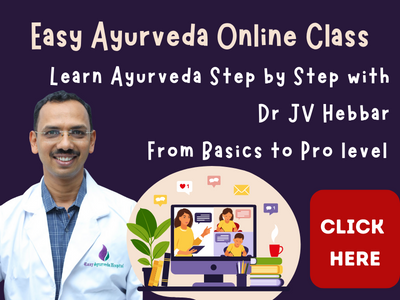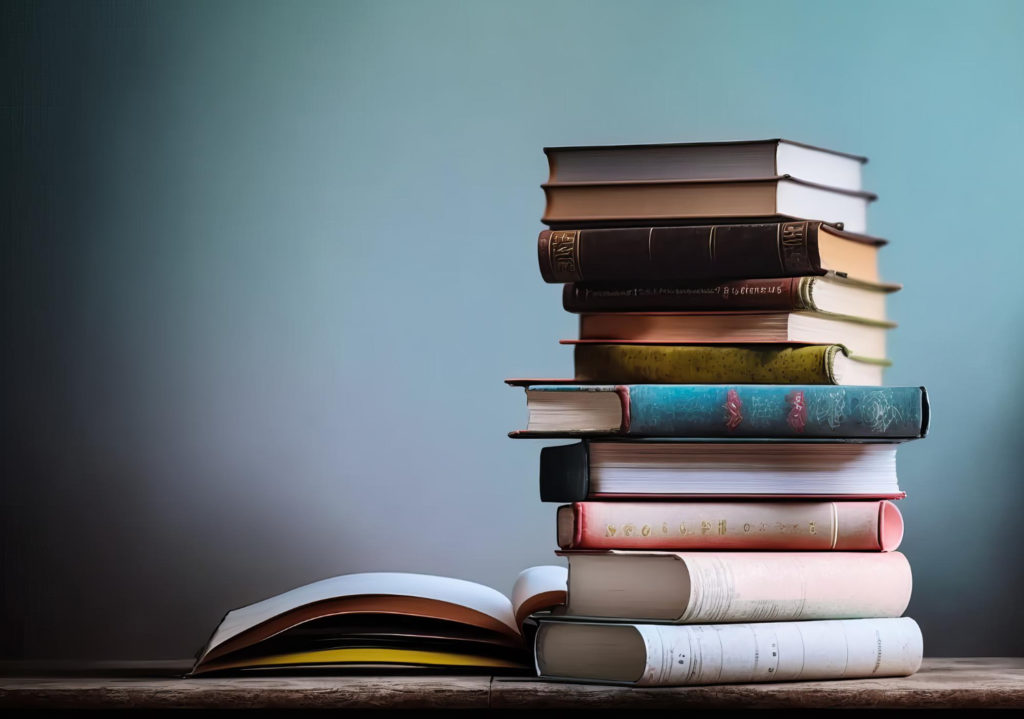Graduation and Post-Graduation of Master Sushruta in Lord Dhanwantari’s School of Ayurveda & Evolution of Shalya Sampradaya
Article by Dr Raghuram Y.S. MD (Ay) & Dr Manasa, B.A.M.S
Context – Sushruta Samhita Sutra Sthana – Chapter 1, Vedotpatti Adhyaya (Origin of Science of Life)
We all know that Sushruta Samhita is one of the oldest treatises of Ayurveda and has been included under the ‘Brihat Trayees’ i.e. the greater trio of Ayurveda. The author of the Sushruta Samhita treatise is master Sushruta – who is also regarded as the father of surgery.
Related Reading – Sushruta Samhita
Related Reading – Sushruta
Related Reading – Brihattrayees
But do you know where and under whom did Master Sushruta completed his graduation in Ayurveda and masters in Shalya Tantra – Ayurveda Surgical Science?
Let us see.
Master Sushruta goes in search of a Guru, to the hermitage of Divodasa Dhanwantari
Table of Contents
“Ayurveda Surgical School of Master Divodasa Dhanwantari”
Once upon a time, located amidst lush green greenery of natural forest region was a well built and protected hermitage. This was an institute of learning the ‘science of Ayurveda’, the Gurukula of Divodasa Dhanwantari. Divodasa who was also called as Dhanwantari is considered as the incarnation of Lord Dhanwantari – the God of medicine. He was the king of the city of Kasi but he lived in the hermitage, after having freed himself from all the worldly attachments and powers and after having handed over the responsibilities to his successor. He was leading a saintly life imparting the knowledge of Ayurveda, mainly the Shalya Tantra – the surgical science part of Ashtanga Ayurveda. Many disciples not only from within the country of ancient Bharata but also those from different countries came to his abode to learn Ayurveda under him. He was considered as the best teacher of surgical science and the best amongst the immortals.
“A group of disciples including Sushruta reach out to Divodasa Dhanwantari”
One blessed day, Sushruta accompanied by a group of disciples who were drawn towards learning Ayurveda, with special interests invested in Shalya Tantra – surgical science reached the hermitage of Master Divodasa Dhanwantari. When they sought permission to meet the revered Guru and entered the hermitage, Lord Divodasa was seated on a raised platform which was specially designed for the Guru of the highest rank meant to be seated. When they entered, the master was surrounded by groups of sages. They had just concluded some discussions.
Sushruta was not only excited to see the teacher but also his heart got swollen with pride to have been blessed to be standing in front of the divine incarnation of Lord Dhanwantari. Sushruta stood there in front of the revered teacher with folded hands and bent head as a mark of respect. The other disciples who had accompanied Sushruta – Aupadhenava, Vaitarana, Aurabhra, Paushkalavata, Karavirya, and Gopurarakshita – also did the same.
Master Divodasa smiled and nodded at them as if he was expecting them and as a gesture of welcoming them to his hermitage.
“Please teach us Ayurveda” – requested the disciples with Master Divodasa Dhanwantari
After wishing the revered teacher, the disciples put forth the purpose of them reaching the hermitage.
The purpose – The disciples said ‘Respected sir, many kinds of physical and mental disorders are bothering the entire mankind. The entire world is engulfed in grief, misery, suffering and pain due to these disorders. Apart from this, they are also suffering from many kinds of disorders caused due to external causes. These people are feeling lonely due to the pain given by these diseases, immaterial of having family, friends, many well-wishers, wealth and comforts. We too are disturbed and are at great pain seeing all this. Therefore, we are all here at your abode to learn Ayurveda from your kind-self dear sir. The purpose of learning Ayurveda would be to cure these diseases and free the people from its clutches and also to provide happiness and establish health in them. We also would like to protect and shield their life from the attack of these diseases and establish wellness through Ayurveda. We know that all the benefits and goodness of this life and the life beyond are embedded in the core of Ayurveda. Therefore, venerable teacher, we all have come to you to become your disciples and learn the science of life from you’.
“Welcome to my abode sons!” – said Lord Dhanwantari
Having heard the appeal of the disciples and knowing the purpose of their arrival, Master Dhanwantari welcoming the disciples to his abode said – ‘Dear sons, I welcome you all to my hermitage and school of Ayurveda. I admire your good intentions and acknowledge your purpose of learning Ayurveda from me. You all have undisputed credentials and are all worthy enough to be taught Ayurveda’.
The first lessons…!
Later, Master Dhanwantari explained about the Ayurveda Utaptti – the origin of the science of Ayurveda, to the group of disciples. He said that it is a branch of Atharva Veda and comprises eight sections and hence called Ashtanga Ayurveda. Ayurveda was first propounded and narrated by the Swayambhu – self-born (Lord Brahma, the creator of the world), even before the creation of this world. It comprised 1 lakh verses embedded in 1 thousand chapters. Later Lord Brahma divided Ayurveda into eight branches.
The eight branches of Ayurveda include –
1. Shalya Tantra – the surgical science
2. Shalakya Tantra – branch dealing with diseases of ear, nose, throat and eye
3. Kaya Chikitsa Tantra – general or internal medicine
4. Bhuta Vidya – demonology
5. Kaumarabhritya Tantra – paediatrics
6. Agada Tantra – toxicology
7. Rasayana Tantra – rejuvenation or anti-ageing therapy
8. Vajikarana Tantra – aphrodisiac therapy
The question of interest and ‘specialization’…?
After briefly introducing the eight branches of Ayurveda, Lord Dhanwantari gives an option of choosing the speciality among these branches that they would like to learn the most, to all the disciples.
All the students voiced that they would like to learn Ayurveda in a comprehensive way under Lord Dhanwantari and showed special interest towards learning Shalya Tantra.
Master Divodasa Dhanwantari obliged and agreed to teach Shalya Tantra to the knowledge hungry disciples.
‘SUSHRUTA’ becomes the chosen one…!
The disciples were highly pleased and happy that the great master had agreed to teach them the Shalya Tantra which they had come to learn.
Now was the time to select a representative from amongst them to directly receive the knowledge of Ayurveda and Shalya Tantra from the revered master Lord Divodasa Dhanwantari. They unanimously selected Sushruta for this.
Addressing the great Guru, all the disciples said in one voice – ‘Venerable Master, thanks so much for accepting us as your disciples and agreeing to teach us the science of surgery – Shalya Tantra. We all think alike and our opinions too are similar and unanimous. We have henceforth selected Sushruta as our representative. He would consult you to learn Ayurveda and Shalya Tantra on behalf of all of us after having understood our thoughts and queries and after having sought our opinions. He will reach out to you and speak and question on behalf of all of us dear sir. He will be the bridge between your kind self and us for the passage of knowledge of Ayurveda. All that you teach Sushruta in the form of the knowledge of Ayurveda and Shalya Tantra will reach us through him. The knowledge shall be passed on to us from him in the same pure and unadulterated form that he would receive from you’.
Hearing this, Master Divodasa Dhanwantari obliged to teach Sushruta, the representative of disciples, and impart him with knowledge of Ayurveda and Shalya Tantra.
Evolution of Shalya Tantra…!
Thus, Sushruta, who would in future script the famous Sushruta Samhita and go on to be known as father of surgery, got admission into the school of Lord Divodasa Dhanwantari to get graduated in Ayurveda and Master’s Degree (post-graduation) and specialization in the field of ‘Shalya Tantra’ – the science of Ayurveda Surgery. The other disciples too got admitted in the same institution and learnt Ayurveda and Shalya Tantra through Sushruta, who would voice the master, Divodasa Dhanwantari.
This was the foundation and beginning of evolution of Shalya Sampradaya or Shalya Tantra, the lineage of ancient surgical science.
Summary and key points to note
1. Sushruta and the other disciples learnt Shalya Tantra from Lord Dhanwantari Divodasa.
2. Were the disciples who reached out to Divodasa Dhanwantari new to Ayurveda?
Hypothesis 1 – By the description of the events in the first chapter of Sushruta Samhita Sutra Sthana, it looks like Sushruta and other disciples were new to Ayurveda. Divodasa Dhanwantari begins his classes by introducing Ashtanga Ayurveda and detailing each branch with their definitions, he describes the origin and descent of Ayurveda, importance of Shalya Tantra, types of diseases, medicines and interventions etc which are the preliminary basics of Ayurveda which are taught to the beginner students of Ayurveda. The next five chapters too deal with basics of Ayurveda which explains that Sushruta and the other disciples also learnt basic Ayurveda from Dhanwantari, just as the current day undergraduate students do.
3. Did the disciples come for getting ‘specialization’ or masters (post-graduation) in Shalya Tantra?
Hypothesis 2 – It is quite possible that Sushruta and other disciples who came to the abode of Divodasa Dhanwantari had already qualified in the basic knowledge of Ayurveda from some other teacher or institution and had graduated out and that they have now reached out to Dhanwantari to learn Shalya Tantra. They all look like disciples with common interest in Shalya Tantra.
This moreover looks like the modern-day picture like, the students from different corners of the country, after having passed out the eligibility test, and have got admissions in the same college, assemble in the Shalya Department (since they have opted out for it or have got the seat for studying the surgical science) in front of the head of the department.
In the ancient version, as discussed, the disciples reach out to Dhanwantari and express their interest in Shalya Tantra. In the modern day version, the students reach out to the entrance exams to get eligibility to study the subject or branch in which they are interested in.
It is also possible that Sushruta and the other disciples have also graduated under Dhanwantari and have once again reached out to him for a Master’s degree. But these chances are less.
From Chapter 7 onwards, the subject of discussion in Sutra Sthana which is the first section of Sushruta Samhita seriously deals with surgical science. So, after a brief introduction of Ayurveda in the first 6 chapters, serious discussions about Shalya Tantra starts from the 7th chapter onwards. So, the specialization is given importance. If Sushruta has documented his Samhita in the way he was taught by Divodasa Dahanwantari, it was definitely for the specialization that the disciples reached out to the Master’s hermitage.
They definitely knew the basics of Ayurveda before reaching Dhanwantari’s hermitage. Sushruta has later documented the embryological and anatomical aspects of Ayurveda in the Sharira Sthana section but there is a possibility that he had learnt those basics before coming to Lord Dhanwantari.
4. Did Sushruta and other disciples undergo graduation and post-graduation in Shalya Tantra in the same institution of Master Dhanwantari?
Hypothesis 3 – Even this is possible. We see that Master Dhanwantari acknowledges the intelligence and intention of the disciples in a context of chapter 1 of Sushruta Samhita Sutra Sthana. This means that they were not new for the master. He knew them because they had graduated from the same institution and were brilliant students. Now they were seeking to learn ‘more of Shalya Tantra’.
It is possible that Sushruta has dedicated the first 6 chapters to make us know how he learnt under the great master, as a dedication to Master Divodasa. Later he takes the chapters of the first section of his treatise in the direction of basics and detailing of Shalya Tantra. Later, Sushruta has classified all his knowledge of Ayurveda into different sections and has contextually distributed them amongst different chapters of those sections. Example, the basics of embryology and anatomy were edited out into the Sharira Sthana section, treatment principles into Chikitsa Sthana section etc. It is interesting to see that each chapter has been dedicated to Master Dhanwantari and his teachings as acknowledged in the first verse of each chapter of the entire Sushruta Samhita. So, hypothesis 3 seems to make more sense.
Sushruta and all his contemporary disciples learnt both Ayurveda and Shalya Tantra under Master Divodasa Dhanwantari.
5. Why was Sushruta selected by the other disciples as their representative? Why could they not all learn under the same teacher instead of sending a representative as a bridge of knowledge?
Hypothesis 4 – Herein we can find a strange and interesting concept in ancient academics related to Ayurveda. The disciples select one among them to procure the knowledge from the greatest teacher in authority. They would later learn from him.
This shows that they were all like-minded (as they had claimed about it) and also that they trusted immensely in the representative that they had chosen. It is just like an entire party which has won the elections cannot rule the country, they need a representative in whom they trust to carry out the responsibilities effectively, in the form of a Prime Minister.
If the teacher teaches all the students at a time, he would be addressing scattered intelligence because each student is different from the other. He needs to adopt many methods to make the subject reachable to all and also would try to simplify the knowledge which he wants to impart. This would dilute the comprehensiveness of the knowledge. Instead of that, if the teacher teaches a representative who is superiorly brilliant and carries the collective intelligence and thought process of his group, he can focus on imparting the knowledge comprehensively and can totally focus on doing so. This representative disciple would transfer the knowledge in its true and unadulterated form to the other disciples, his colleagues, in a simpler and effective way. This would make learning a science or its speciality
A similar pattern can be found explained ‘Atreya Sampradaya’ i.e. Atreya school of Ayurveda too. Herein, Punarvasu Atreya and the group of elite sages elect Master Bharadwaja as their representative and send him to Lord Indra – the king of Gods, to learn Ayurveda from him. After having accomplished the mission, Sage Bharadwaja would impart the knowledge of Ayurveda learnt from Lord Intra to the disciples of Atreya and the other sages in a pure and unadulterated way. In this context, Lord Dhanwantari represents Lord Indra and Master Sushruta represents Master Bharadwaja.
In a reference, we find that Lord Dhanwantari had learnt Ayurveda from Lord Indra. This makes him equivalent to Sage Bharadwaja, who also learnt Ayurveda from Lord Indra.
Sage Bharadwaja imparted his knowledge of Ayurveda learnt from Lord Indra to Atreya and his contemporaries, who later taught Ayurveda to Agnivesha and other sages. Sage Agnivesha went on to write Agnivesha Tantra, which later was redacted by Master Charaka into the popular treatise we know, ‘Charaka Samhita’.
Keeping this in parallel, Master Divodasa Dhanwantari, imparted his knowledge of Ayurveda to Master Sushruta and his contemporaries, mainly to Master Sushruta. So, in comparison to Atreya school of Ayurveda, Sushruta is equivalent to Atreya. Later the knowledge of ancient Ayurveda Surgery was passed on to the further generations.








